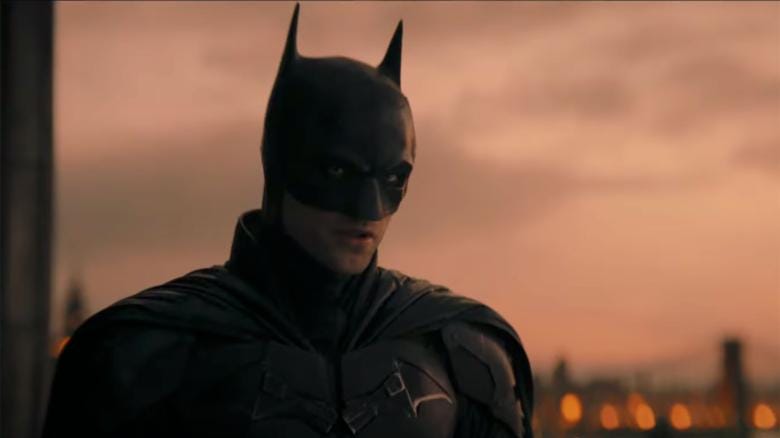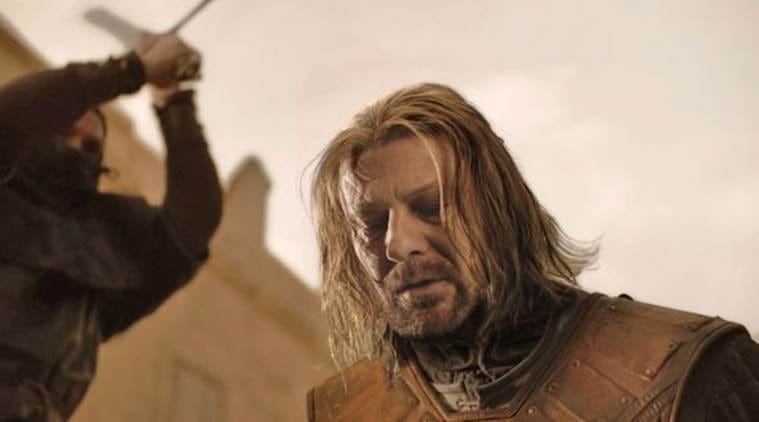Stories made for children are diseased with black and white morality. We are taught early on to embrace the hero and to reject the villain. We are not expected to question the goodness of the good guy or the badness of the bad guy. There is no need for deliberation, no need for critical thinking.There is no such thing as nuance. We are not asked to consider the point of view of the wolf in Little Red Riding Hood. We are not pushed to wonder why Cinderella’s stepsisters act the way they do. Similarly, (until recently) we have not been encouraged to forgive or understand the Joker, and neither are we encouraged to wonder about Batman’s mental health. We are given very clear messages: you are either good or bad.
As children deprived of this nuance grow older, they take the same mindless practice beyond the world of fiction. It becomes a very flawed lens through which we judge the people we read about in the news—people we will never meet. We are expected to root against those deemed “bad” without question, with only some of the facts. And we love it. We know we are not the bad guy because we are able to judge the bad guy so harshly. What a simple way to wade through life—so much easier with only two options. So much easier to deliberate without critical thought. So much simpler to sympathize only with the “good guy.”
In the past few years, stories about antihero-protagonists have become increasingly popular. Revisions have been made on the stories we ingested as children; not only comic book characters like the Joker, but the villains from Disney movies, like Maleficent from Sleeping Beauty, or Cruella from 101 Dalmatians. We are given origin stories meant to tempt us into forgiveness or at least a more holistic understanding.
A hero is without major flaws—virtuous, strong, hard-working, honest, not to mention beefy. They’re certainly not murderous, misanthropic, complicated, erratic, or—as is so often the case, scarred—like villains. Instead, they selflessly save lives; they are pure and simple; they’re squeaky clean. When we enjoy the traditional hero-centered narrative, we side with simple stupid perfection, and perhaps we also enjoy the theatrical juxtaposition of what seems so purely good against what seems so clearly bad. But villains as they are depicted in the hero’s narrative are boring too. They’re just as two-dimensional as the hero.
Why do we love this type of narrative?
Affective Disposition Theory (ADT) attempts to explain how we enjoy stories, and it may explain why we never ask how the “bad guy” came to behave so villainously. It does not explain, however, how we came to embrace the narrative of the antihero.
Stories are told with the assumption that there is entertainment value to them, or because we believe an audience will want to engage with them. One way (perhaps the best way) to engage an audience is to create a narrative with a clear distinction between the “good guy” and the “bad guy;” a binary between right and wrong, good and evil. This false moral binary is a major mechanism with which we enjoy the narratives we ingest. In fact, according to Affective Disposition Theory, it is our constant judgment of the virtue of those characters that predicts our enjoyment of the narratives we read and see on-screen. ADT argues that the way we enjoy a story and even more specifically the characters in the story, is through our ongoing, persistent moral judgment. We participate emotionally with the story and enjoy the heroes depicted because we judge them to be “good” and we enjoy rooting for the force of good. We want to see the virtuous rewarded and the sinful punished. But Affective Disposition Theory does not seem to leave room for our enjoyment of antihero protagonists.
How is it that we come to love antihero narratives?
Game of Thrones may be one of history’s most-watched TV series (with 44 million people across 173 countries tuning in to season 8) and remains a well-loved book series. Each character’s point of view is taken, and as the story progresses, we find that none fit the quintessential hero mold (forget about Ned Stark—SPOILER ALLERT—he doesn’t even last one season), and none truly fit the mold of the villain.
It is a story stock-full of antiheroes. Another profoundly popular HBO series, The Sopranos, centers on Tony Soprano who’s internal turmoil excludes him from would-be villain status. Sherlock Holmes as depicted in the show, Sherlock is a self-proclaimed psychopath who seems to solve puzzles for the “good guys” almost by happy accident. Villanelle from Killing Eve is a sadistic, hired killer, a primary psychopath, and yet we love her. And again, do we not come to love or at least empathize with Maleficent and Cruella as they’re depicted in their own stories?
When we come to enjoy these characters and their stories, are we dealing with a variation of the same ADT mechanism? Do we see morality peeking through, enough-so that we feel we are rooting for the relative good guy? Do we have different ways of enjoying antihero narratives? Researchers have started undertaking these questions. ADT may not predict which characters we will like so much as the process through which we will like them, and that process predicts how we will feel about the story itself. It contends that our enjoyment of a story begins and ends with the characters depicted within it, and suggests this as a process through which our enjoyment can be explained. When a story’s characters fail to elicit emotion, it will fail to elicit enjoyment.
Some studies suggest that identifying with the protagonist is key to enjoying the antihero narratives. Additionally, some have found that physical features play a large part in how we think of them, in terms of race, level of attractiveness, and so on. Other studies, looking at humor have shown that people enjoy disparaging humor as long as it is not directed toward a member of their tribe, and more so if the disparaging humor is directed at people or groups they dislike. If we apply these findings to our question, how do we enjoy antiheroes? we are faced with the likelihood that the ability to identify with the character is a major piece of the mechanism involved. We may need to identify with the antihero in some way in order to embrace them.
What does it mean if we are able to identify with the antihero, the would-be villain? What does it say about our morality?
If we are not enjoying the antihero in the way that ADT suggests (through constant moral judgment) what happens to our moral judgements? How does this process of judgment loose its seemingly ubiquitous importance in terms of our relative narrative enjoyment? Have we excused the antihero from moral evaluation or have we come to understand their actions as moral in certain lights?
Some researchers attribute our enjoyment of antiheroes to an activation of a specific story schema—a schema being a sort of conceptual blueprint we establish across experiences, which we use to make sense of new concepts, in this case relating to stories. According to this theory, over time, we develop a story schema unique to antihero narratives which encourages us to disengage morally, enough so that the morality of a character’s actions becomes less relevant to our judgment of them. According to this view, after establishing this antihero story schema, we are able to interpret these stories in a different way than how we might standard hero narratives. Eventually, we learn that approaching these stories with the standard lens will result in disappointment (the protagonist will let us down with their murky morality), and so we disengage morally in order to enjoy the alternative protagonist.
And once we allow ourselves to like a character, we can sympathize with their fight.
This brings me all the way back to Affective Distribution Theory. Perhaps it is all relative. No one said this process must be uncomplicated, that we must easily distinguish a character’s moral standing in order to appreciate them and with them, their stories. In antihero centered narratives, particularly those reframing the behavior of classic Disney villains like Maleficent or Cruella, we see something much more satisfying than good and bad, we see complex characters who make mistakes sometimes with good (or relatively good) intentions.
It is interesting to ask whether we disengage in any way in order to enjoy the standard hero narrative. When we make moral judgments, we should be engaged both emotionally and intellectually. Sometimes our judgements are more heavily influenced by one than the other. When we allow ourselves the simplistic and unrealistic indulgence of a good versus evil narrative, we have most certainly disengaged or at least lessened the part that intellect should play in making moral judgements. Despite any unwillingness to admit it, we all know deep down that nothing is so simple about our fellow humans, not their goodness or evilness, nothing.
There may be a larger question looming: in what way do these ideas of moral judgment, moral engagement or disengagement matter?
Imagine the sinister possibilities of maximizing on our constant, intrinsic, moral judgment of others as a means to enjoyment or positive emotion.
To drench the world in black and white ideas of good and evil (as has been done since the dawn of the oral tradition) may leave the masses vulnerable to unexamined ideas of morality, who has value, who has moral authority, who is good and who is bad (and whether that even matters), and to what extent the desire to compare and contrast good and evil reflects reality. By practicing this dichotomous way of thinking, how do we help or hurt the communities we live in?
Do prescriptive and overly reductive ideas of morality prevent us from functioning at a higher societal level? And might they impede our ability to reach our own moral peak? How do we decide for ourselves what is or isn’t moral if we simply carry forward these formulaic rules for deciphering good from evil, rules which we begin to drown in from the first storybooks and movies we are exposed to as children?
Let us embrace the antihero for all her beautiful moral complexity; for her ability to change our perspective. Let us embrace her because she is human, and teaches us to see the entirety of another. The hero, on the other hand, with all his otherworldly perfection, teaches us to judge reductively, with a sense of morality that belongs only in fairy tales and children's games of make-believe.
Long live the antihero.







